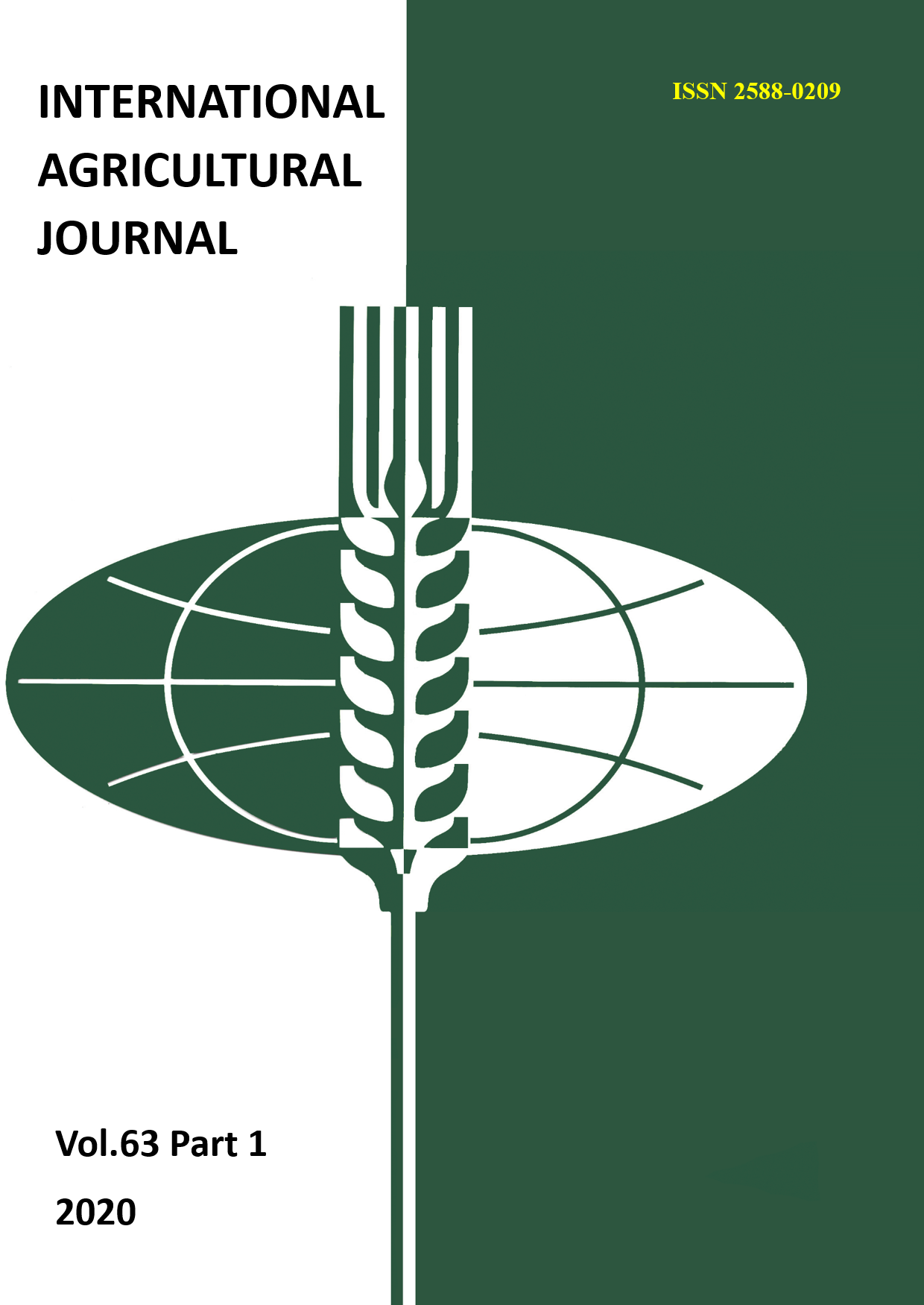THE INFLUNCE OF GREEN-MANURED FALLOW ON SALINE SOIL FERTILITY OF YAKUTIA
Main Article Content
Abstract
This article provides results of experiments focusing on determining the effects of green-manured fallow on permafrost saline soils in Central Yakutia. 74,7 thousand hectares or 74% of the explored area of the republic are covered with saline soils. In general, arable land soils are typically chloride-sulfate (45%) and chloride (27%) salinity types. The field works were carried on frozen meadow-chernozem saline soils of agrological company’s “Nemyugyu” plot “Moydokh” located on the second inundated terrace of Lena River. For the green manure material, we used the White melilot (Meliotus albus) due to its increased drought and salinity resistance compared with other legumes. Additionally, this species supply upper soil horizons with biogenetic calcium inhibiting the soil salinization. Crop rotations included: 1. Pure steam- barley-oat-pea mix; 2. Green-manured fallow (melilot)- barley-oat-pea mix (post-action of fallow)- oat+ melilot. By several parameters, such as digestible protein amount (up to 0.36t/ha), green mass yield (up to 21,2-23,2 t/ha) and feeding units (up to 2,57-3,99t/ha) in green-manured fallow oat-pea mix was 1.5 times higher than in rotations of pure fallowing. These results indicate the apparent positive effect of the green-manured fallow application on crop yield. The surface tillage of barley resulted in a green-manured fallow seed yield of 1,31t/ha and 1,29t/ha in a pure fallow field. By the end of crop rotations, the number of elements and soil salinity levels improved, except for the phosphorus and potassium levels. Soil pH decreased from initial 7,20 to 6,98; humus increased by 0,59% and total nitrogen in soil increased by 0,03%. In the case of the phosphorus and potassium, the amounts decreased by 32,85 and 8,80 mg per 100g of soil respectively. It is also necessary to point that no only humus content increased, but the amount of humic acids increased by 0,23% (initially 0,64% to 0,87%). Taken all together, the melilot utilization as green manure are beneficial via its ability to desalinize the soils as well as increasing gross humus content and it is quality improvement, and lastly by increasing seeding and feeding crops yields.
Article Details
References
2. Elovskaya L.G., Konorovskij A.K. Zonirovanie i melioraciya pochv v YAkutii. - Novosibirsk: Nauka, 1978.- S. 17.
3. Stepanov A.I., Vinokurova V.S., Alekseeva A.D., Bubyakina V.A., Popov N.T. Severnoe sel'skoe hozyajstvo: sostoyanie, problemy i perspektivy // Agrarnaya Rossiya. Nauchno-proizvodstvennyj zhurnal, 2000, № 2. - 28 s.
4. YAkovlev A.S., Alekseev V.L., Alekseeva L.V. Sovety lugovodam v YAkutii (YANISH). - YAkutsk: Kniga. Izdatel'stvo, 1974. - 7 s.
5. Kursakova V.S. Vliyanie mnogoletnih trav na zasolenie pochv // Zasolennye pochvy Zapadnoj Sibiri, ih svojstva i metody ozdorovleniya. Sb. Nauch. T. Omsk: OSHI, 1984.- 37 s.
6. Bronya B.A. Metody polevogo opyta / B.A. Bronya - M .: Kolos, 1978. - 416 s.
7. Metodicheskoe posobie po agroenergeticheskoj i ekonomicheskoj ocenke tekhnologij i sistem kormoproizvodstva. - M .: 1995. - 173 s.
8. Sistema sel'skohozyajstvennogo proizvodstva Respubliki Saha (YAkutiya) do 2005 g. / RAAS, Sib. Sentyabr' yakutskij –Novosibirsk, 1999. –304 s.
9. Rastenievodstvo na korm, semena i zelenyj navoz. Metodicheskie rekomendacii - Novosibirsk, 1984. –26 s.

